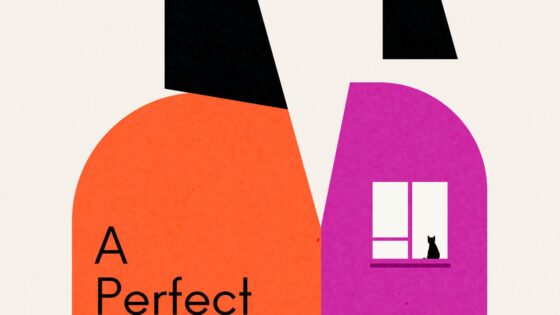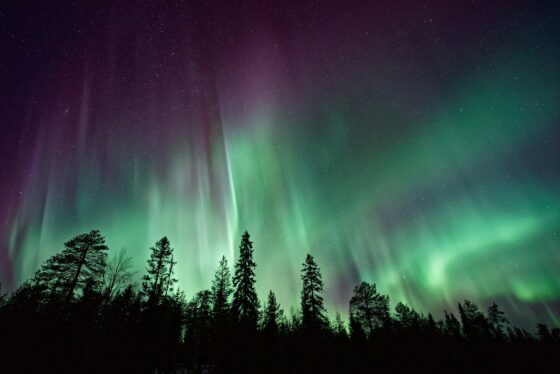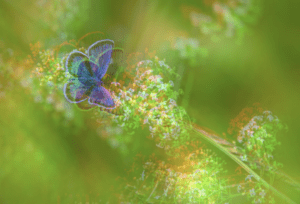
Whiptail Lizard | Come night, burrowed in the same hole, they curl, beat to beat. When one is in estrus, the other jaws her abdomen, her neck. Rings her, touching cloaca to cloaca. No gametes are exchanged—the offspring will be clones of the mother—but they are nonetheless in co-creation. The one in estrus receives—a blessing, perhaps. A promise of support. Reason to begin the work of reproduction. A whiptail kept from her female[1] mate—for they are mates, without question—will hatch only a third as many young. A day later, even two, the bite marks remain, visible on her skin.
The first time I talked to my family about queerness, I spoke only about mice.
I was maybe thirteen, on the beach near my childhood home with my mother and her cousins. They were talking about the serenity of the beaches and the tourists who disrupted that serenity. A common topic of conversation, which I mostly ignored, until one of my mother’s cousins mentioned that some tourists came specifically to our beach—from all over the country—to spend a few days in the surf with people like them.
“Like them?” I said.
“Gay.”
I felt a thrill at the word. Not the thrill of recognition, but the thrill of the unknown, even the forbidden. As the conversation moved on, I considered how I might direct it back to that word, that titillating subject. My options were limited. I’d never met a queer person. None of the books I’d read were queer. I knew exactly one thing about homosexuality—When overcrowded, I said finally, mice turned homosexual.
I don’t remember where I’d learned this. As a teenager, I was always reading about animals, watching television about animals, spouting animal facts at the dinner table. Maybe I’d read about those mice or heard about them on Zooventure.
I didn’t know I was referencing a 1962 publication by John B. Calhoun, in which homosexuality—along with increases in aggression, infant mortality, and anti-sociality—was considered indicative of social collapse. I understood my statement as a defense of queerness: queerness as an altruistic act, absenting oneself from reproduction, a practical response to a crowded world.
I didn’t connect the mice with myself, hadn’t begun to think of myself as queer. At the time, those mice were the only model for queerness I had.
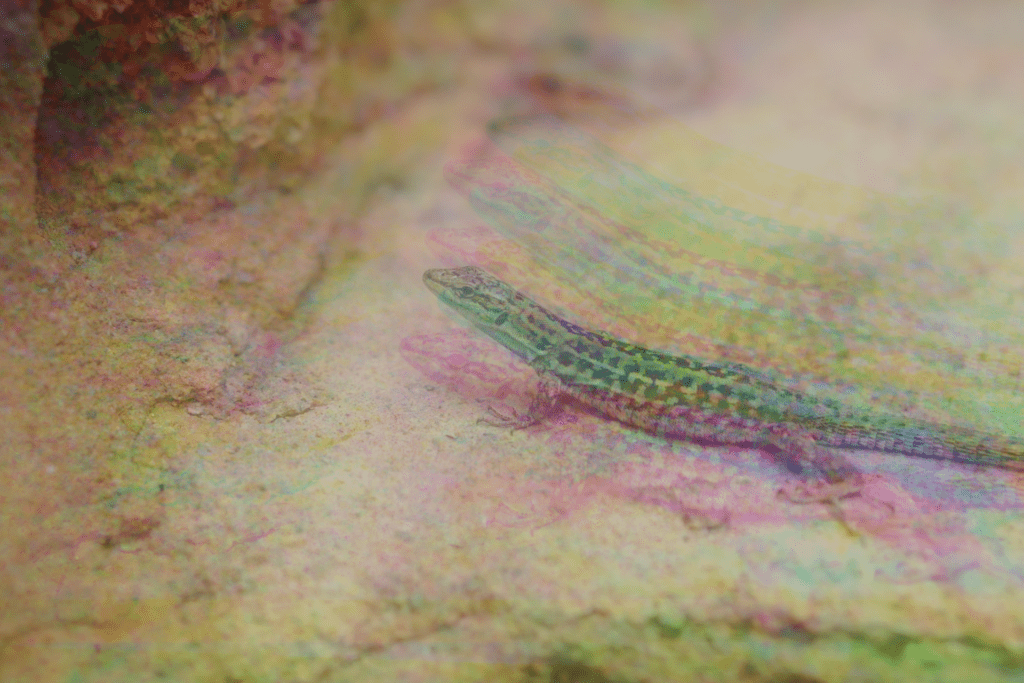
House Mouse | She ignores the courtship and provocations of male mice, but even near the end of her life, having raised her pups to self-sufficiency alone, she pauses when she encounters—amid the shavings and the pellet food and her own waste—the urine of another female. She takes her time, attempting through scent and moisture to pinpoint the location and readiness of this nearby mouse. If she finds her, she will mount her to suggest they nest together, raise future pups as a couple. She is a mutant, the successful deletion of her FucM gene signaled by her agouti coat. After her death (anesthesia and beheading) her brain will be sectioned, stained, and searched for an answer to one question—how did desire for a female mate survive the gene deletion when desire for a male mate did not?
In college I kept them in a folder on my desktop. The PDFs were sorted by scientific name—Larus argentatus, Thalassoma bifasciatum, Rattus norvegicus. Calhoun’s mouse observations. A description of female co-parenting in owls as an “Abnormal and Maladaptive Behavior in Captive Raptors.” An article observing that captive white ibises exposed to high levels of mercury became more likely to choose same-sex mates. An article detailing the activities of husbandry scientists who locked rams in a stanchion and presented them with male “receivers” (males frequently mounted by other males) and female sheep, killing rams who showed interest only in males to remove “dud studs” from the gene pool. An article from 1987 titled “A Note on the Apparent Lowering of Moral Standards in the Lepidoptera,” which described mature male Mazarine butterflies approaching and mating with male butterflies newly emerged from chrysalis, grasping the new male with their clasper and touching abdomen tip to abdomen tip before his wings were dry. The articles skewed toward vertebrates and, within vertebrates, toward mammals and birds. This reflected both the skew of research on same-sex animal pairs, and my own preoccupation.
I told only one person about these articles, a stranger at the manatee health checks in Crystal River, Florida. She was working the nets, spent her hours waist-deep in muddy water, trapping manatees and beaching them, ensuring the capture didn’t harm them. I was on the veterinary side with the faculty advisor overseeing my undergraduate thesis. I squatted in front of each manatee, counted their breaths. If the manatee went more than forty-five seconds without a breath, I splashed their nose with a cup of water to trigger the surfacing response, watched the nostril plugs retreat as the manatee sucked in air, a low roar.
I had noticed her quick-dry khaki shorts, the bunch of her shoulders, her competence with the nets, and so when we were both on break, eating granola bars in the shade of a canopy tent, I tried talking to her about queerness. I told her that seagulls exposed to DDT were more likely to wind up in lesbian pairs, that atrazine disrupted endocrine functioning in frogs, causing male frogs to have lower levels of testosterone and to take male partners.
She gave a little shrug. She said, “Manatees are gay.”
“Yeah,” I said, though I hadn’t known this, hadn’t yet encountered the articles describing male manatees nuzzling each other, mouthing each other’s genitals, thrusting against each other, penises erect, as they sink from the water’s surface into the mud, uttering snort-chirps upon ejaculation.
She said, “I’m gay.”
I had, I realized, known this.
“Whatever’s in the water, we’re getting it, too,” she said. Her tone was flat, almost a shrug, but I thrilled at the pronoun. On that sweltering summer day, as manatees were dragged up the beaches for weighing and stool sampling and blood draws, I received the word we as an offer of community. I, too, might have been poisoned to queerness. We lived in a toxic world.
Razorbill | When she returns to the arena after feeding, the waiting razorbill runs toward her, a repeated squawk signaling intentions, which the returning female can accept or decline. The returned razorbill lifts her chest, extends her wings, an invitation. The two hook necks, bodies close, then one mounts the other. The returned razorbill does not lift her tail. The other does not insist she lift her tail. They are both paired. Each has an egg secure in a nest in the colony, brooded now by their mates. What matters isn’t the tail-lift, the cloacal kiss, but the mounting and the squawks that advertise the mounting, the show of it which benefits them both, insisting to the ones packed on the rock sheer, beaks to the sky, heads swiveling to attend to the activities of the arena, that they both belong.
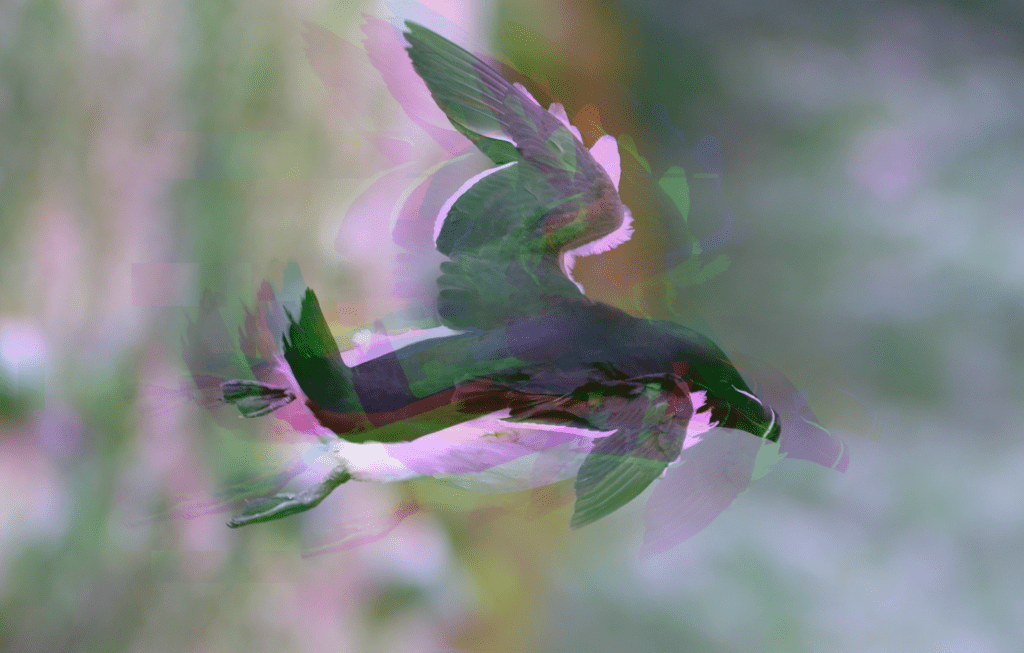
By grad school I had put lesbian seagulls and effeminate frogs behind me. I understood stories about homosexuality in animals to be the terrain of conservative pundits and right-wingers on social media. Besides, I no longer needed those stories. I was sunk deep in the pleasures of a close friendship, an agape I believed the province solely of humans.
I called her my best friend, a label that made our connection legible to everyone except myself. We spent hours together in cafes and city parks, read books side-by-side. We took a summer road trip together, sharing a tent. One night, we camped just off the road in a coniferous forest where bats crowded the evening sky. There, she said she sometimes wished she were queer, which surprised me. I said I thought I was queer, which surprised her. The female bats calling above us were pair-bonded. In these nonsexual relationships, they share food, sometimes share a roost, grooming and huddling together. Animal behaviorists call these partnerships. They last five to ten years. We shared food, sometimes shared a roost, huddled together that summer, never had sex. We called it friendship, though at times I felt frustrated by the word and would propose that we change it—to partner, to sister. The last time I proposed this—after it had become clear that my desire for closeness, for contact, outpaced hers—she said, “I can only ever be a friend to you.” She said this as though it settled things, but the word remained opaque to me. In an attempt to understand it, I asked my housemates, my friends, my colleagues what was the difference between a friendship and a partnership. Sex, most of them said. But other than sex? I asked.
I charted their responses in a notebook—friendship on the left, partnership on the right. Beneath were categories: time spent together (friendship, episodic; partnership, continuous), traveling to see each other (friendship, rarely; partnership, often), help in medical emergencies (both), physical intimacy (friendship—hugs, sex possible but frowned upon; partnership—sex), celebration of successes (both), good conversations (both), and mutual love (both).
I sent her the chart, asked for revisions, comments, edits. This didn’t fix anything. Our friendship ended soon after, and for a time I wondered if it might have lasted if I’d just had better words—the word, or what passes for a word among bats, that brown bats use to describe their bonds; the word queer as I understand it now, as an orientation not about sex but about intimacy; a word for family that doesn’t mean blood.
I no longer think a lack of language alone spelled the ending. Rather, it signified a larger lack—my lack of experience and understanding of human relationship patterns. I moved, after the friendship ended, toward sex as a marker of romance, and toward romance as a sign of closeness. I created relationships that fell clearly to one side of my chart. I updated the chart occasionally, adding a row, adjusting a definition. I remember feeling, each time I worked at it, hopeful and productive, as though I were finally getting somewhere, as though with enough time and data points, if I worked with real precision, I could chart a taxonomy of love, as I’d once charted a taxonomy of cetaceans.
Bottlenose Dolphin | His species does not wuzzle, so when the spinner dolphins begin—the roil of water, the clicking which speeds as they move faster, the light shattered by the waves the pod creates, he approaches with his partner of thirty-two years. Their partnership began in adolescence. Their sex, then a daily and gymnastic undertaking, has long since subsided to an infrequent and brisk occurrence. The wuzzle offers them the stimulation of that old adolescent pod. They notice a small spinner at the wuzzle’s periphery and swim to the spinner, one on each side. His partner, soft-eyed, sinks slowly, log-like, a seduction the spinner refuses with a tail kick. The bottlenose swims upside down, locates the spinner’s slit, sends clicks, a genital buzz, acoustic foreplay. He pokes the spinner’s slit with his beak. The spinner shifts away, toward the wuzzle. His partner cuts in front, shifting the spinner up toward the surface. Each breathes. He and his partner become erect at the same time, taking turns rubbing against the spinner, the spinner dodging first up again to the water’s surface, then deeper, deeper, an attempted avoidance, but the two bottlenose dolphins can’t be avoided. They are far from the wuzzle now. The spinner emits pulsed squeaks. His partner nudges his beak into the spinner’s slit and swims forward, propelling the spinner. The spinner speeds up to break contact, but the bottlenose cuts in front, forces the spinner low, low in the water near to the bank of sand. His partner penetrates the spinner’s blowhole—a second, less than a second, then the spinner escapes in a scatter of sand, and the two of them are left alone. His partner beaks his slit and they swim until he tires of it, spins belly-up to detach, surfaces, watches languid as his partner, erect again, drags his penis through the sand.
For most animals, queer sex is loud. Female Kob antelopes whistle to other females. Female koalas bellow. Female coupled red foxes gekker—mouths wide open, teeth nearly touching, paws on each other’s chests, throats working around a sound somewhere between a keen and desperate laughter. Female gray foxes snirk. I was silent. Silent during sex, a silence from which my first partner attempted to coax me with direct questions and frequent check-ins, a silence from which I tried to coax myself, reading books for humans—books on sex with women, on sexual communication, on liberated sex, on healing sex, books which didn’t help.
Having exhausted the resources of my species, I eventually turned again, for the first time in years, to other animals. Wasn’t sex, after all, the one thing that could be left to that older cortex, to the lizard brain, to the animal of me? Hadn’t the bacteria in my gut and the fungi in my ears and the mites on my eyelashes been copulating and procreating since I was a child, and weren’t those creatures in some way a part of me, and shouldn’t I, on account of their prowess, be able to tap into some sexual instinct, some deep and formidable desire? I still didn’t need other animals to justify my queerness, but I needed them to teach me how to be queer. Instead of searching for homosexuality or same-sex mating, I searched for articles about sexual communication in animals. I found Bruce Bagemihl’s Biological Exuberance, which offers dozens of examples of queer desire in other animals—in bottlenose dolphins and whiptails, razorbills and bonobos. In these descriptions, there’s no talk of poisoning or genetic mutation. Queerness was natural.
Bonobos have more than twenty-five gestures to specify sexual intent and desire, sexual requests. I memorized these gestures. I extended my arm, bent my hand inward toward my belly, and made rapid vigorous circles to tell my (nonexistent) bonobo partner to turn around, one way of initiating a sexual interaction. I made come-hither motions with my fingers to invite approach. I had no desire to have sex with a bonobo. Even if I had, bonobos inhabit a single remote and densely forested area in the Democratic Republic of the Congo, accessible only by boat or plane. Most scientists estimate there are fewer than 20,000 left, and these estimations are probably too high. My likelihood of ever putting these gestures to use was nil. But I clutched my hands at my belly, then opened them to say, Spread your legs. I flicked my hand side-to-side to suggest that my bonobo partner position their genitals for sex.
Using hand gestures combined with facial expressions, eye contact, and body language, bonobos communicate sexual interest, negotiate positions, and describe desired types of sexual contact. The gestures are used in a specific order—they have syntax. A female bonobo might indicate to another female, “I want to finger fuck your front-hole.”
Biologists speculate that these gestures evolved because bonobo sexual contact is complex, diverse, and varied. Female bonobos regularly have sex with other females, rubbing their clitorises against one another. Marlene Zuk has suggested the bonobo clitoris is frontally placed, away from the vulva, as is the human clitoris, “perhaps because selection favored a position maximizing stimulation during the genital-genital rubbing common among females.” Female bonobos have sex lying down, standing rump to rump, hanging from tree branches. In a troop of ten females, female bonobos have on average five sexual partners. These sexual partners are also emotional partners, creating the multiple pair bonds that form the core of bonobo social organization.
In English, when I attempted to tell my partner what I wanted, I experienced a temporary aphasia, but it was easy to be obscene with my hands. In the bonobo lexicon, for the first time, I was fluent in desire.
Red Fox | When the breeding one has that smell of wet mud, she approaches. On first approach, the breeding one boxes her away. On second approach, she gekkers. On third approach, she snirks, opens her mouth in a V, showing teeth. The approaching fox opens her own jaw, calibrating the angle to match that of the breeding one, presses upper gum against gum, lower jaw against jaw, that click of tooth, that ache in the cheek muscle. The mounting, when it happens after, is brief, almost a formality. The bond comes of clicks and gekkers, noise-making together, and from the whelping, the after-whelping, when on first approach the lactating vixen might nudge away the other’s pups, but on second approach, exhausted, will let them suckle, and on third approach might even nudge the pup, not hers, with one paw, positioning their small body, facilitating the latch.
When my partner and I first discussed the relationship we wanted to create, we described it as asexual. Neither of us wanted the pressure of physical intimacy, the ticking clock of the first kiss, the difficulty of navigating desires in a framework of romance that structured and insisted upon them.
Six months in, we tickled and wrestled each other. A year in, we pressed our bodies together, put our fingers in each other’s mouths. “Is this sex?” I asked them. “No,” they said. We touched each other’s stomachs, thighs, clits. “Is this sex?” “No.” “Is this sex?” “No.” “How about now?” “Maybe.” “I think so.” “Probably.”
I could find no corollary for this phenomenon—an asexual relationship morphing into a sexual one—in the nonhuman world. I searched in mollusks, which fill oceans with their milky sperm, and in galliformes, the most gender-fluid and socially complex of birds.
When I brought this concern to my partner one evening before bed, they said, “Of course you can’t find one. Animals don’t force themselves to have sex, they don’t need those labels.”
“You don’t know that,” I said. I reminded them that people are always underestimating the sophistication, intelligence, and diversity of other animals.
They said of my approach to relationships—the chartmaking and the writing and the searching for models, the attempting to explain and rationalize, to taxonomize and codify—“It’s the most human approach I can think of.”
“The most human?”
“Red squirrels,” they said, “aren’t studying seagull mating habits to justify their poly relationship structures.”
“Seagulls aren’t poly,” I said.
“Regardless,” they said, an edge of impatience in their voice, “we’re specific.”
That word with the same root as species. We were human, they meant.
I said, “Cephalopods. Cephalopods might switch from asexual to sexual.”
They said, “This. Lying here, doing whatever we want, calling it whatever we want, not feeling ashamed of it, this is animal.”
I learned later that some octopi do live asexual lives, having sex only toward the end of their life cycle—the male dying immediately after, the female living long enough to lay eggs. Not an especially useful model, but still it comforts me, because when I think about my partner and I, our future, I can’t imagine us human. Instead, I imagine the anis, in which two couples share the avian equivalent of a one-bedroom apartment with a crib, or the wrasses who spawn in trios—one male, one female, one a third gender for which English offers no easy word (the wrass has a word). I imagine us as stumptail macaques or harbor seals or even cliff swallows, building our cozy mud nest onto a polycule beneath some bridge. Never as humans.
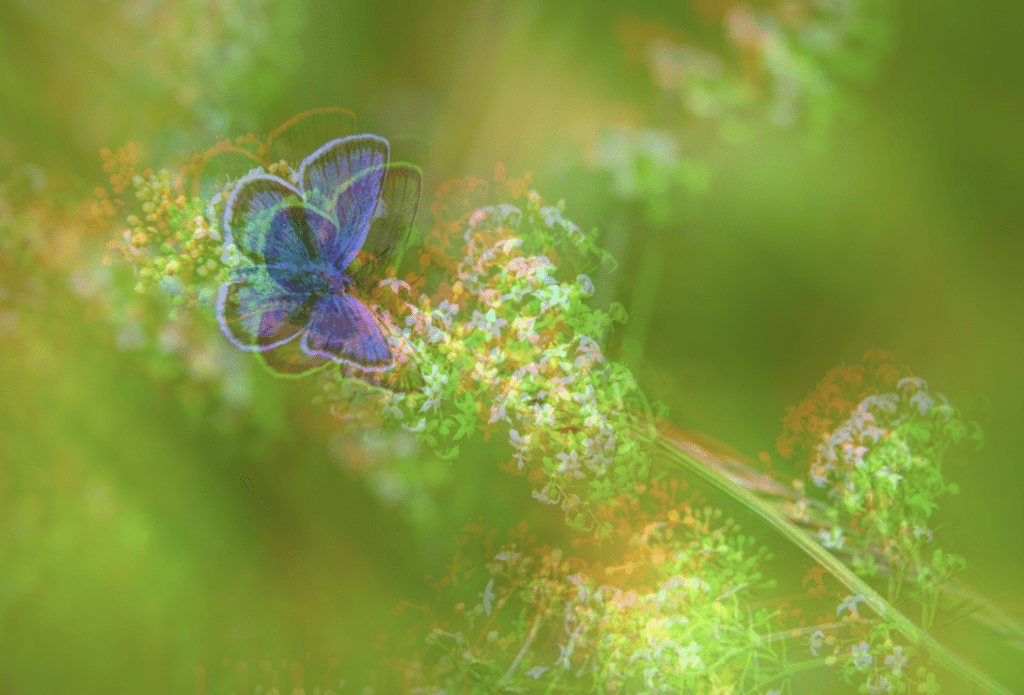
Tree Swallow | One lays eggs. The other does not, but she broods the laid eggs. The eggs will not hatch, what matters is not the hatching, what matters is the warmth of the eggs, the graceful passing of those eggs from one parent to the other, the folding of her partner’s bib of fat over those eggs, a slow unfurl which sometimes, like now, causes her cloaca to tighten, so that she mounts her partner as her partner broods the eggs, everting her cloaca to touch beneath her partner’s lifted tail, both of them overcome.
***
[1] In this essay, I will use “female” to denote non-human organisms who make large gametes and “male” to denote organisms who make small gametes.
****
Rumpus original art by Iris L.


